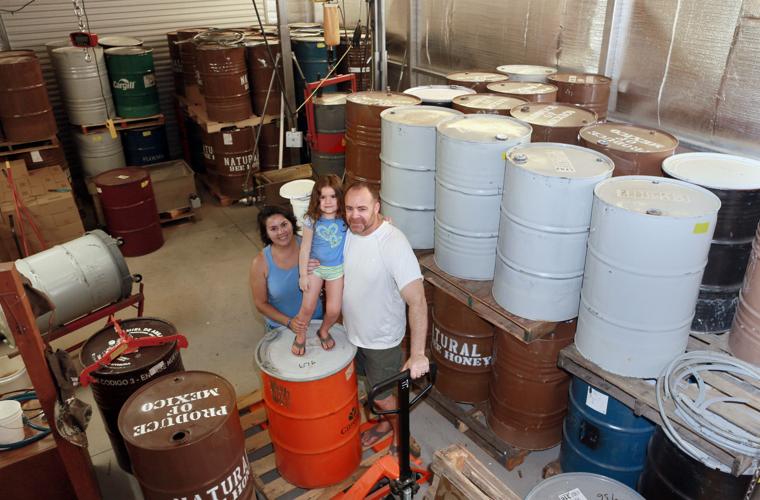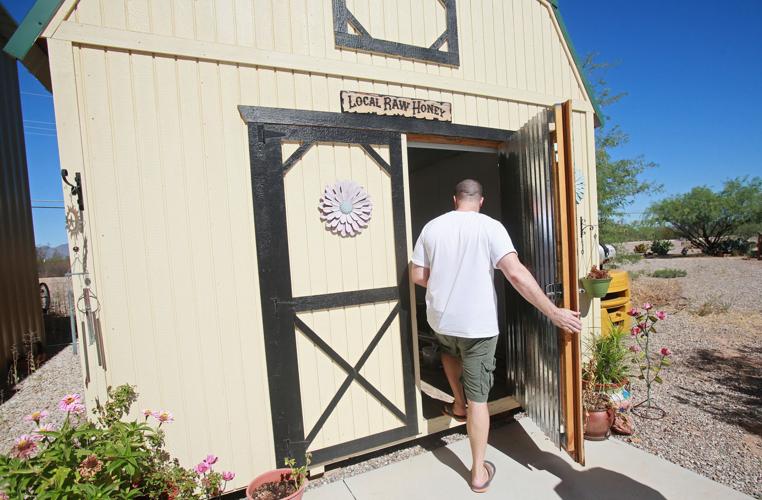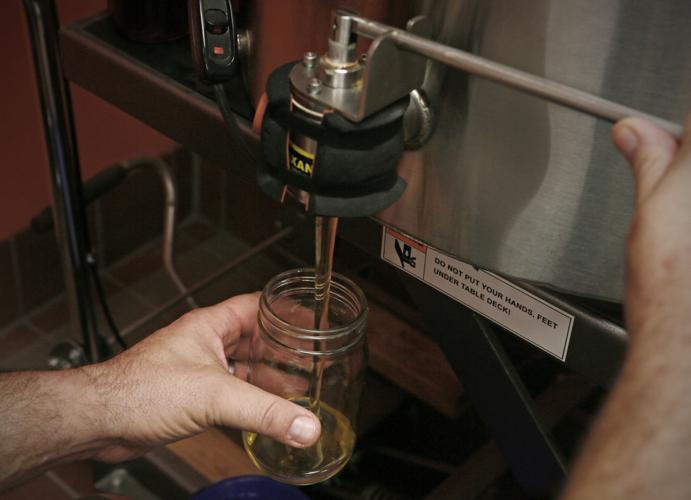Anthony Tubbiolo had $212 to his name, and he owed almost half of it, when he took a chance and bought a case of raw honey to sell by the side of the road.
He sold it in one day.
“Then I went back and got two cases, then I went back and got three. After about two weeks of doing that I had the idea that I could, like, actually do this,” he said.
Tubbiolo quit his three part-time jobs and slowly started to grow, but he found it frustrating that everything he was making had to go back into the business. He needed working capital, but no bank would touch him.
“I tried to get loans with everybody, but I had no credit and bad credit because of a bankruptcy,” he said.
He contacted Accion, a microfinance nonprofit, and got the money he needed, $10,000 at 13.5 percent interest.
“They were the only ones that were willing to take a look at the operation,” Tubbiolo said. “They came out, saw it was real and that we were engaged in it on a daily basis, that the whole family was involved in it, so they felt it wasn’t so risky.”
Two more loans and four years later, True Love Honey in Marana is on track to make $400,000 in sales for 2016.
Groups like Accion and other Community Development Financial Institutions are a vital alternative to traditional banks and financing, and for many small-business owners they are the only lenders that will work with them.
“We mitigate factors, like character or what’s the plan for the business, that allows us to do something for them,” said Alex Magallanes, a loan officer with Accion. “We want them to succeed because if they win, everybody wins. They’re thriving in the community and the economy is improved.”
Taking that extra risk does mean higher interest rates than traditional lenders offer, officials said.
“Risk determines price. People don’t think about that. There’s cost of funds and then there’s risk, those are the two components of lending,” said Ellen Kirton, who spent 35 years in banking and now heads the Pima Community College Small Business Development Center.
Interest rates with local alternative lenders vary from 8.5 percent to 22 percent, and while business development groups like the SBDC will always guide clients to what’s best for them, sometimes circumstances mean not going through a bank.
“They’re a bridge, and the great part about the bridge is they don’t have prepayment penalties so they want to help these folks,” Kirton said. “It’s a higher interest rate, but then, they work with someone like the SBDC, we get them to full health, then they can go to a commercial bank with a better rate.”
While micro and small-business alternative lenders serve many people who are just starting out or don’t qualify for a traditional loan due to bad or limited credit, they also help established businesses.
When Gerd Van Grinsven, co-owner of Euro Design Systems, needed capital for equipment, he went to Prestamos CDFI, which lent him $135,000 and consolidated a previous SBA loan.
The Tucson-based manufacturer, which specializes in furniture for universities and government, has been in business for 20 years and has more than $1.5 million in annual sales.
Getting the loan through Prestamos was an easy process, Van Grinsven said, and he would go to it again if he ever needed to.
Both Prestamos and Accion can handle loans from a few hundred dollars up to $1 million, officials said, and repayment rates hover around 95 percent.
Access to credit
Many banks and traditional lenders have come to depend on these alternative lenders.
“They want to keep their clients in their bank but they know they cannot or will not give them the loans that they need,” said Rachel Burgoyne, a loan officer with Accion. “They rely on us to really boost the economy and boost those businesses up until they’re bankable.”
Bankers are by nature conservative, said Tucson Mayor Jonathan Rothschild, and although the economy is improving and so is access to credit, it could be better.
“What we went through in 2001 and what we went through in 2008, I really think that changed the environment. There was a time when you could be on a positive trend and people would jump on it; now it dictates caution,” he said.
Rothschild, who recently participated in a bankers’ roundtable organized by the Pima Community College SBDC, said that while he understands bankers’ situation, he can’t help but chide.
“What I like to tell the bankers is, there’s opportunity for you here but if you’re not going to take it, these other guys are,” he said.
More and more banks and credit unions are trying to serve the population that now falls under alternative lenders, officials said, but their reticence is understandable.
“They have shareholders and ultimately they have a responsibility to consider those shareholders,” Burgoyne said. “It’s a tough decision to make, to take on smaller loans that are not very profitable.”







